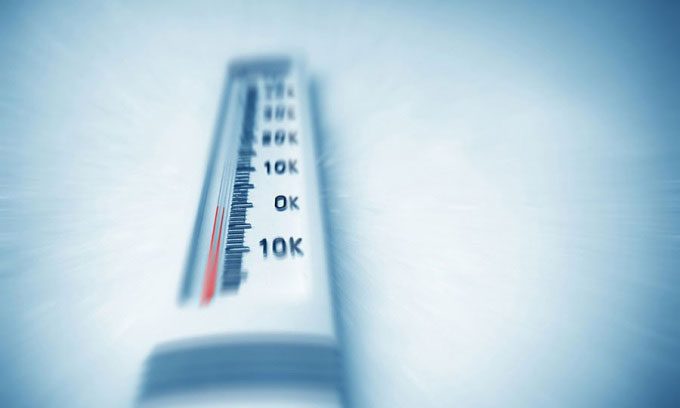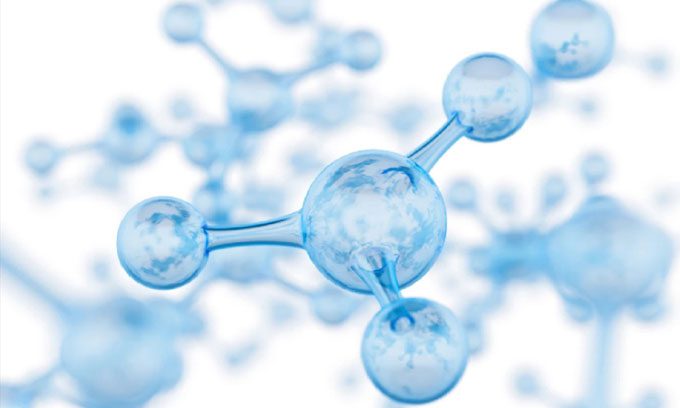With current technology, it is impossible for humans to create absolute zero and accurately measure such low temperatures.
Absolute zero is the lowest temperature theoretically possible, defined by scientists as 0 Kelvin or -273.15 degrees Celsius. This temperature is even colder than outer space. To date, based on human understanding, nothing has reached absolute zero. So, is achieving this milestone feasible?

Absolute zero is even colder than outer space. (Photo: Michal Bednarek/Thinkstock).
To answer this question, we first need to understand what temperature is. Most people think of temperature as the degree of hotness or coldness of an object, but in reality, it is a measure of the energy or motion of all particles within a system. Hotter objects have more energy, causing their particles to move faster. The point at which particles have no energy—thus stopping all motion—is defined as absolute zero.
Scientists are interested in such low temperatures because many intriguing quantum effects occur as particles slow down. A fundamental principle in quantum mechanics is wave-particle duality, the phenomenon where a particle such as a photon can behave as both a particle and a wave, according to Sankalpa Ghosh, a physicist at the Indian Institute of Technology Delhi.
When working with quantum mechanical particles, it is crucial to remember their “indistinguishability.” “You cannot track individual particles or waves the way we can with larger objects,” Ghosh explains.
The extent of this wave-like quantum behavior is represented by the ratio of the distance between particles in the system, known as the de Broglie thermal wavelength. At normal temperatures, this quantum behavior is unremarkable, but strange effects begin to emerge as particles become cooler.
“This ratio will increase as the temperature decreases, and at absolute zero, it becomes infinite. Quantum phenomena such as superfluidity (frictionless flow), superconductivity (current flow without resistance), and ultra-cold atomic condensation all occur due to this,” Ghosh states.
Early ultra-cold experiments took place in the 1990s, using laser cooling techniques to explore these effects. “Light exerts a force on atoms, slowing them down to very cold temperatures, around 1 Kelvin or -272.15 degrees Celsius. This level is low enough to observe quantum behavior in solids and liquids, but for the gases we study, we need temperatures in the nanokelvin range to observe these quantum effects,” Christopher Foot, a cold physicist at the University of Oxford, noted.

German physicists have cooled atoms to the lowest temperature ever recorded. (Photo: Depositphotos)
The lowest temperature ever recorded in a laboratory was achieved by a research team in Germany in 2021. They dropped gas atoms from a 120-meter-high tower and continually turned a magnetic field on and off to slow the particles to nearly a standstill. This type of experiment is called magnetic trapping cooling, in which gas particles were cooled to a temperature of 38 picokelvin—38 trillionths of a degree Celsius above absolute zero, well within the range to observe quantum effects in gases.
So, do we gain any benefit from trying to cool materials further? According to Foot, the answer is likely no.
“We are more interested in quantum effects than in reaching absolute zero. Laser-cooled atoms have already been used in atomic standards that help define universal time (atomic clocks) and in quantum computers. Work at lower temperatures is still in the research phase, and people are using these methods to test universal physical theories,” he said.
Currently, cooling below 38 trillionths of a degree Celsius is not feasible and requires overcoming several obstacles to realize it. In fact, even if absolute zero were achieved, scientists could still miss it due to inaccurate measurement techniques. “With current devices, you cannot tell whether it’s zero or an extremely small number. To measure absolute zero, you actually need an infinitely accurate thermometer, and that goes beyond current measurement systems,” Foot explained.


















































